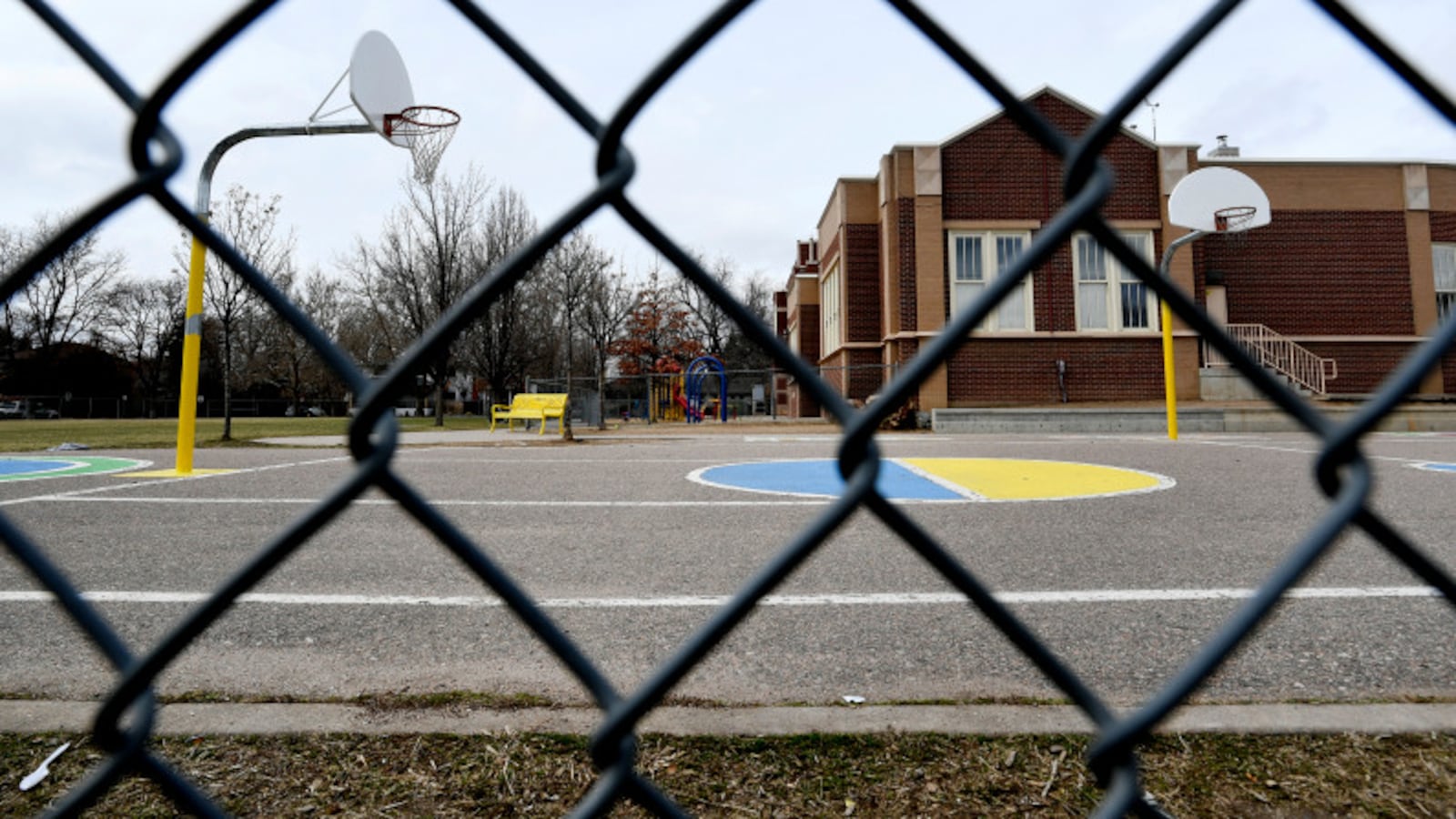It was a Tuesday like no other.
Crosswalks were empty. Children’s backpacks and lunch boxes sat unused. Yellow buses weren’t rumbling down many streets, and school doors didn’t swing open at dismissal.
Schools were closed from New York to San Jose and so many points in between, causing an unprecedented disruption to American life with no end in sight.
Over the past week, officials nationwide made the agonizing decision to close schools in response to the worsening coronavirus. Some governors made sweeping statewide decrees. Elsewhere, decisions rested with mayors, superintendents, and charter leaders.
Several concerns were obvious and immediate — how to educate millions of children, how to feed those who rely on schools for meals, how to provide child care for those parents who can’t work remotely.
But the absence of schools means something more to parents, students, educators, and countless others. It has upended the very rhythms of their daily lives in ways that we are only now starting to understand.
Chalkbeat reporters from across the country spent Tuesday interviewing Americans grappling with the sudden, indefinite change to their school communities. Many are at best uneasy, at worst frightened. Some, though, have found reasons for hope.
Brooklyn, NY
Will Ehrenfeld, teacher at Pathways in Technology Early College High School
History teacher Will Ehrenfeld began his morning like most others: With peanut butter toast, an apple, and a cup of coffee. But when he arrived at Pathways in Technology Early College High School in Brooklyn around 8 a.m., his routine was anything but normal.
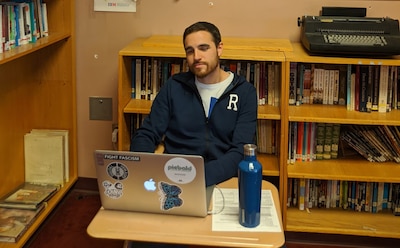
While New York City students remained home for the second day of a closure expected to last at least until April 20, teachers had to report to their schools Tuesday, the first of a three-day training on how to transition their courses online. Remote learning across New York City district schools is set to begin Monday.
Ehrenfeld and his colleagues huddled in the school library to hash out details on the massive shift, discussing whether to offer virtual office hours via text message, and debating how demanding to be of their students. They did this all while trying to maintain a few feet of physical distance from each other, a situation that has made Ehrenfeld and other educators across the city uncomfortable.
“We’ve been discussing as a staff what the expectations should be,” said Ehrenfeld, whose school serves nearly 600 students, two-thirds of whom come from low-income families. “A lot of people in our community have varying levels of internet access and parent supervision.”
Before the coronavirus dominated headlines, Ehrenfeld was preparing to teach students about the Dust Bowl and how environmental factors helped cause the Great Depression. He now feels the unit has an eerie contemporary resonance, and plans to ask his students to explore that.
“I’m asking them to do more writing about current events because we’re in a historic time,” he said.
Ehrenfeld expects to let students complete assignments at their own pace and to rely on videoconferencing as little as possible, as some students will be using cell-phone data plans to do their work.
And while Ehrenfeld is hopeful that students will engage with the material, he’s also trying to calibrate his own expectations, given the ongoing public health crisis.
“Students’ lives are being affected really dramatically,” he said, “and I’m trying to be sensitive that some students are going to really struggle to learn on their own.”
Memphis, TN
Renita Parks, teacher at Memphis STEM Academy
Renita Parks was thankful to be spending the day relaxed at home rather than in her classroom at a charter school in the Frayser neighborhood of Memphis.

Parks, 36, is expecting her first child in June. This has heightened her anxiety over the spreading threat of the coronavirus.
“I don’t want my baby or myself in unnecessary risk,” she said.
But the pregnancy has also multiplied her empathy for her second grade students at Memphis STEM Academy, most of whom do not have access to the internet or a computer at home.
“The digital divide here is huge,” she said. “I know. I’m African-American, from urban Memphis – the people in my community, I just don’t know how this will affect them in the long term if we’re relying on remote access for weeks and weeks.”
Parks found out her school was taking an extended break around lunchtime on Thursday – the last day of classes. She didn’t have time to print off much for her students to take home, but since then she’s been able to communicate with some parents through a texting app and send them resources to use at home.
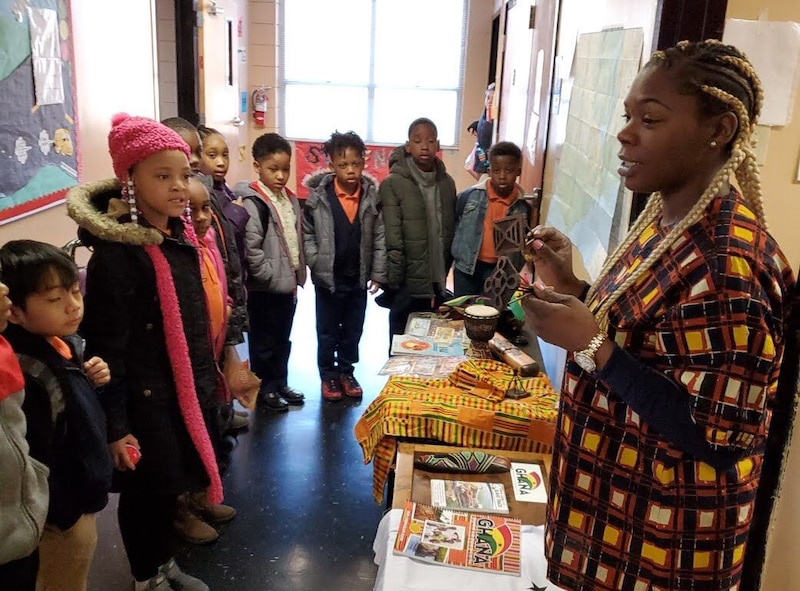
Though she tried to relax and enjoy her day, Parks spent much of it checking social media and news outlets for updates on the coronavirus out of what she called a “weird anxiety.”
“I’m actually not a fearful type or anything but it is definitely scary,” Parks said. “I’m about to bring my first child into the world. And for the first time that I can remember in my generation … it feels like this is the onset of something happening that we’re not in control of.”
Newark, NJ
Douglas Freeman, parent at Newark Vocational High School
In the Freeman household, class began at 8 a.m. sharp.
Douglas Freeman and his son Jaylin, a freshman at Newark Vocational High School, got seated in Freeman’s home office and logged onto Google Classroom. When Jaylin started algebra at 8:30, working through problems and watching videos his teacher posted about adding and subtracting monomials, Freeman followed along — or tried to.
“It was a rude awakening,” the father said. “Like, I got to do algebra again?”
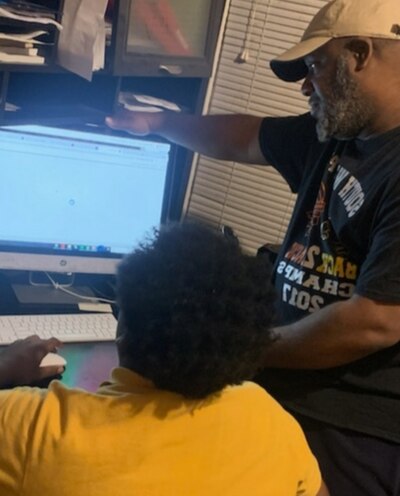
Freeman is president of Weequahic Park Sports Authority, a nonprofit that organizes youth and community programs in the South Ward park. Because the city closed the schools and the county closed the parks, father and son are home together, converting Freeman’s office into a two-person classroom.
Along the way, they’ve had plenty of help from Newark Vocational’s staff, Freeman said. On Monday, Principal Kyle Brown hosted a conference call with families where faculty members explained how students would use Google Classroom during the shutdown along with district-made work packets. When Freeman and his son ran into technical difficulties, they called the school’s parent liaison for support. And when a teacher noticed the Freemans weren’t logged into the program, he called to check in.
“It’s like I’m a co-assistant and I have the teacher and my son and we’re all learning together,” Freeman said.
Meanwhile, other South Ward residents have been trading advice in a Facebook group that Freeman helps moderate. Parents have told one another where to pick up the homework packets and shared their makeshift homeschooling schedules. Teachers have volunteered to help with the assignments and to track down Google Classroom login codes. Freeman even posted a video of himself trying to make sense of his son’s algebra assignment.
“We have a crisis right now,” Freeman said, “but out of the crisis something positive is coming through.”
The sudden experiment in homeschooling has also allowed for some father-son bonding, Freeman said. They slogged through math together and discussed careers in the culinary arts, one of the school’s vocational programs. Jaylin said he’s actually enjoyed the time with his dad.
“I’m surprised it’s going well,” he said. “It’s actually more fun than school.”
Detroit, MI
Sam Fairley, student at Detroit Edison Public School Academy
Sam Fairley was out of bed at 9 a.m., three-and-a-half hours later than normal. Not that it mattered.
In just a few dizzying days, “normal” for the 17-year-old high school senior has been upended by the mad scramble to contain the new coronavirus.
Choir practice: canceled. Classes: canceled, with a still-uncertain plan to move to online instruction next week. His shifts at a sandwich joint, which he was using to save up for a prom outfit, are drying up. Prom itself: who knows?
His school, Detroit Edison Public School Academy, moved its spring break to this week, hoping to buy time for teachers to create a plan for online learning.
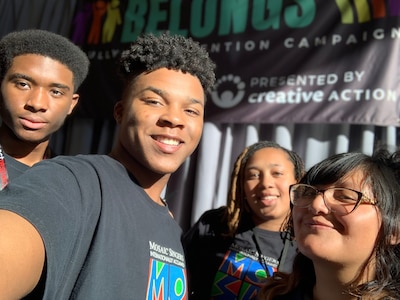
That left Fairley, who is used to a jam-packed schedule, desperate to kill time. He spent the morning picking up cleaning supplies (the store was busier than usual, but stocked up), and stopping by the bank to make sure that his savings had survived the stock market plunge (they had).
By noon, his friends were up and his phone was buzzing. They have settled on group FaceTime calls as the best available replacement for crowded high school hallways. Discussion centered on the so-far-unfounded rumor that Detroit would follow San Francisco and require residents to stay home, a dismaying prospect.
“Everybody is over it right now,” Fairley said. “Now that we’re forced to be home, we’re bored out of our minds.”
He’ll have plenty of time this week to ponder a future beyond COVID-19. He’s been accepted into two collegiate music programs, and he’s still deciding which one will best launch him into a career as a music teacher or an opera star.
“I want to be optimistic that things are going to be well,” he said. “And that I’ll still be able to pursue my dreams.”
Indianapolis, IN
Julie Bryant, teacher in 10-district special education cooperative
Special education teacher Julie Bryant was trying to video conference with one of her students, but her grandson insisted on being part of the conversation.
“I want to see them, Mimi,” the toddler said. “I talk too, Mimi.”
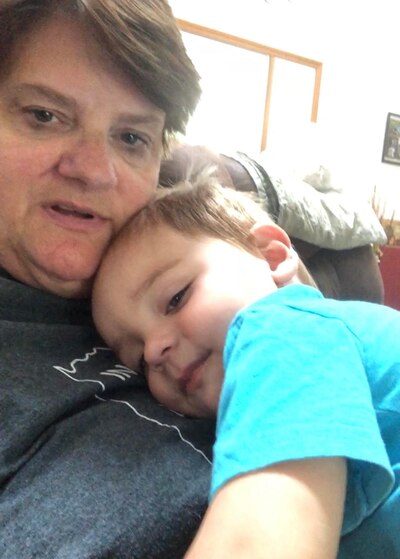
On a typical Tuesday morning, Bryant would have been to at least one of the 10 school districts she serves through a special education cooperative in southern Indiana. Instead, on her second day working from home, she was balancing taking care of Bentley with working with her 31 students. All from the recliner in her living room — feet up and wearing sweatpants.
Earlier that morning she arranged a video call via FaceTime with her team of paraprofessionals, apologizing to them that she didn’t bother with makeup. The team began scrambling weeks ago to come up with a plan for each student in case campuses closed due to the coronavirus epidemic. That planning has proved vital.
Two of Bryant’s students are blind, which makes learning from home particularly difficult. For those students, paraprofessionals dropped off schoolwork, including Braille resources, at their homes. Bryant has video called them — one in elementary school and the other in high school — each day to go through lessons and help with technology.
Last night, she called one of them to work through multiplying fractions. What an unfortunate time to try teaching students fractions, Bryant said, laughing.
It may seem counterintuitive to do a video call with students who can’t see. But it helps for her to see them, Bryant explained. As for her students, they already know little Bentley’s voice. They make sure to say hello to him first.
Denver, CO
Rebecca Goldstein, parent of student at the Laradon Center
Rebecca Goldstein was supposed to have hand surgery Tuesday, and her 16-year-old son Ben, who is autistic, was supposed to be at his school in Denver.
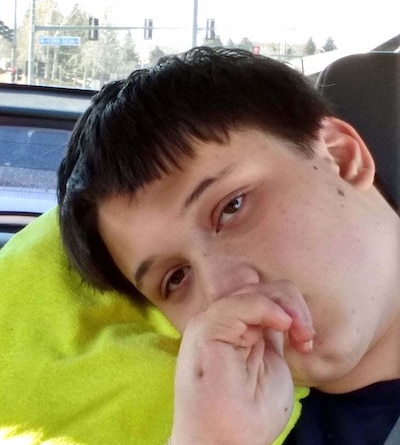
But neither of those things happened. Instead, the pair grabbed breakfast at a McDonald’s drive-through, sharing a coffee and munching on sausage, hash browns, and a breakfast sandwich in their car. Then Goldstein did something she never does: She took Ben to the grocery store.
It was a risky excursion because Ben often runs away and has no fear of streets, but it went well. Goldstein walked with her hand carefully hooked around Ben’s arm and kept up a constant patter: “I like the way you’re holding my hand. I like the way you’re talking to me … Can you reach that for me?”
“It was really nice to be that way with him,” she said.
When they got home, after their house cleaners had left, Ben spent time in his room, which is filled with stuffed animals, padded mats, blocks, art supplies, and Velcro-covered balls. Goldstein said her son doesn’t know anything about coronavirus or the fact that his school — the Laradon Center — is closed for three weeks.
“He just thinks it’s vacation,” she said. “I don’t even think he realizes he’s home on a non-Saturday or Sunday.”
The hard part for Ben will be going back to school in April. Goldstein said he often gets frustrated when it comes time to restart dormant routines like getting on the school bus at 7:50 a.m., working with therapists, or transitioning from one school activity to another.
But that’s a problem for another time. “It’s just been peaceful today,” Goldstein said.
Denver, CO
Blake Hammond, principal at Green Valley Elementary
It was supposed to be “sports day” at Denver’s Green Valley Elementary, the second day of a spirit week organized by the student council.
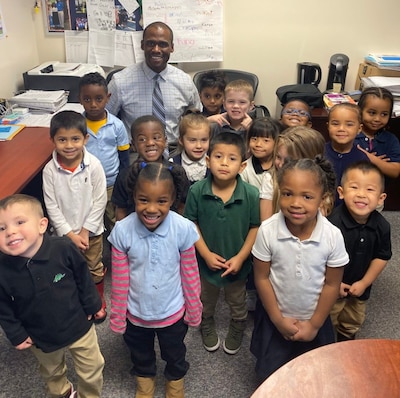
Instead, Principal Blake Hammond arrived at 8 a.m. to an empty school, save for the custodian.
Classes had ended Friday afternoon, but families had Monday and Tuesday to retrieve their children’s belongings. Because Green Valley had mobilized so quickly last week — preparing work packets, stuffing backpacks with crayons, delivering students’ medication to their homes if their parents couldn’t pick it up — not a single person showed up Tuesday.
“It was a silent day with no kids,” Hammond said.
Hammond spent the morning on office tasks like updating the school’s website. Although his school has enough computers and tablets for each of its 680 students, they didn’t take them home. The Denver school district framed its three-week closure as an “extended spring break,” and Hammond didn’t think the devices would be necessary. Now he’s not so sure.
“That’s the big question: What is next?” he said.
At noon, Hammond left the school through the doors where, until last week, he spent every morning high-fiving each student as they arrived at school. Last Monday, he said they switched from high-fives to elbow bumps. Later in the week, as the number of confirmed cases of coronavirus in Denver grew, they switched again from elbow-bumps to a squirt of hand sanitizer.
Then this week, there was nothing at all.
Chicago, IL
Kat Shapiro, teacher at Westinghouse College Prep
On the first day of cancelled classes in Illinois in response to the pandemic, Kat Shapiro stood ready to help freshman English students with a remote “office hours” session that drew on a scene from “Romeo and Juliet.”
But no students joined the online alternative that Shapiro and fellow teachers at Chicago’s Westinghouse College Prep designed. And Shapiro was fine with that.
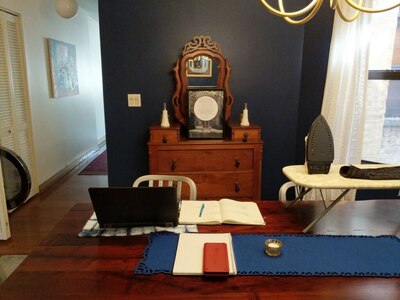
“They are ready for a break,” Shapiro said. “I am thinking students will get very lonely and maybe they will be reaching out a little more in the days to come.”
Shapiro, for the time being, is working out of a dining room. While waiting to see if students would pop in to talk Shakespeare, Shapiro could update journal entries, catch up on ironing, and fill out complicated paperwork related to teaching students with special needs.
As a special education teacher, Shapiro plans to have open office hours in coming weeks to support students in understanding the enrichment work they picked up in a packet on Monday, the last day of school. Shapiro has also provided a list of educational and interesting podcasts and documentaries for students to watch.
Chicago Public Schools has said it is not prepared to offer full e-learning, but instructed teachers to prepare enrichment materials.
Now, like many other people across Chicago, Shapiro is keeping away from people while staying available for any questions or concerns that students may have.
At the same time, the newlywed teacher is appreciating the quiet, time, and space that the mass cancellations have created.
“I got married on Jan. 19, and I started a new job on Feb. 3,” Shapiro said. “I did not get time to connect to my new wife. I think we both feel hopeful that this will provide an opportunity for people to connect with their families and to rest and to be mindful, and learn new ways to structure our lives.”
Brooklyn, NY
Koko Niang, student at Brooklyn Technical High School
On a typical school day, Koko Niang is up by 6:30 a.m. to make it to Brooklyn Technical High School in time for class. He rides the N train from his home in Bensonhurst for about 45 minutes, and joins the crowd filing into America’s largest brick-and-mortar high school, which enrolls about 6,000 students.
Not Tuesday.
Koko, a 17-year-old junior, slept until 10 a.m. He expected to have some tight deadlines to meet for class assignments today. But he grabbed his phone and saw that his teachers had delayed the due dates for various tests and homework assignments until next week, when the country’s largest school system will attempt to move all of its teaching and learning online for 1 million students.
“I was going to cram it today,” he said. “I just relaxed and watched YouTube.”

Brooklyn Tech is among eight New York City high schools that require a special test for admissions and are widely considered the Ivy Leagues of the public school system. The crush of projects, tests, and other obligations had driven many Tech students to continue showing up for school last week even as calls grew for them to be closed.
“Many of my peers were thinking about going to school because of projects and tests,” he said. “Since school has closed now, I’m really glad for it.”
At the same time, Koko already wonders what will become of his junior year, one of the most important for college applications. An engineering program through Columbia University that he hoped to attend has shifted online. College campus visits have been canceled.
“Usually colleges would look at what we do outside of school, and especially our tests. But the SAT was cancelled,” he said. “The juniors of this year have a huge, huge disadvantage.”
San Jose, CA
Diana Albaker, teacher at Lynbrook High School
When teachers at Lynbrook High School in San Jose got three hours’ notice to pick up whatever they’d need during the school shutdown, English teacher Diana Albaker rushed to her classroom.
She’s midway through reading “A Raisin in the Sun” with her juniors and “Macbeth” with her sophomores and is pondering how to effectively teach online. Her district, the Fremont Union High School District, is continuing learning during a three-week shutdown of schools in Santa Clara County that began Monday and a regionwide shelter-in-place order.
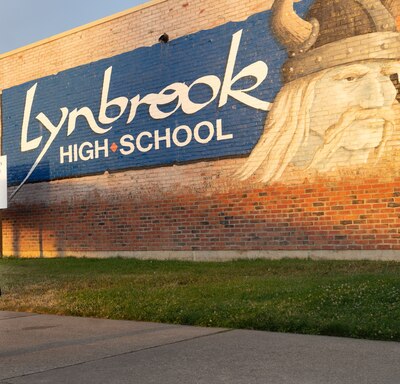
Maybe she’ll have to extend lessons? She grabbed resources on poetry, short stories, and journaling. She doesn’t know how long school will be closed or if she’ll need to add subjects and assignments.
Early last week, Fremont Union got a jump on the closure by providing Chromebooks and hotspots to students who needed them. It’s making administrators and technology experts accessible to teachers.
“I just used Zoom for the first time today. I was like, thank you, I can probably figure out how to use this with my students,” Albaker, 39 and in her 14th year of teaching, said Tuesday. “I feel very supported.”
Albaker is reworking lessons, since her students can’t meet to act out plays. As Albaker feels her way through a brave new homebound world, she’s exploring new ways to teach.
With every bump and challenge, she wonders, “How am I going to navigate this?” But she feels fortunate: “At least I have something to navigate.”
New York, NY
Danielle Morris, parent
Danielle Morris’s 8-year-old son slept in until 8 a.m. on Tuesday. It was one of the only perks Morris could think to being at home amid New York City’s school closures.
As the city’s teachers prepare for remote learning, parents are becoming de facto teachers. Morris has found herself in both camps — she’s an independent school teacher but also a parent teaching her own children.
“My boys, I love them, but they’re not the most cooperative children, which is probably the case for a lot of parents,” Morris said, laughing.
Homeschool started at 9 a.m. on Tuesday, condensed into a three-hour window for her sons, ages 8 and 10, who attend an elementary school on the Upper West Side. Both boys read for an hour then wrote essays about topics of their choice — her older son chose wildfires, her younger son basketball.
They also watched some videos through a site called BrainPOP, which provides short videos on topics such as the coronavirus and grammar. The boys later did math problems through Khan Academy, an online learning site.
Morris is not worried about where her next paycheck is coming from, but the situation isn’t without stress. A literacy specialist, Morris will have to figure out remote lesson plans for her students over video chat with other teachers.
But her husband will be fielding phone calls from 8 a.m. to 5 p.m. for his own work, and she doesn’t want to jeopardize her babysitter’s health, so Morris will have to supervise her younger son. Morris is also remotely finishing one more class for her master’s degree at Columbia University’s Teachers College.
“I don’t know — honestly I don’t really know how I am going to do it,” Morris said.
Tuesday afternoon, her sons played basketball and with Legos. Her older son practiced his clarinet. But the day was full of reminders of how this new normal isn’t normal at all.
“He was playing the clarinet and he goes, ‘The concert’s not until May,’” Morris recalled. “And I thought to myself, There might not be a concert in May.”
Detroit, MI
Rina Flow, teacher at Barack Obama Leadership Academy
Rina Flow ran errands. She watched movies with her family. She cooked dinner. But something was missing.
She missed seeing the faces of her fourth graders at the Barack Obama Leadership Academy. She missed how they cheer during class games. Their laughter and eagerness to learn. The songs they sing about landforms and clouds.
“Today feels less interpersonal,” Flow said. “I miss the a-ha moment,” when students learn.
On the second official day of Michigan’s statewide shutdown of schools, Flow – Mama Flow to her students – worked out of the “teaching room” of her eastside Detroit home. She graded papers and set up online classrooms.
Just the night before, she had traveled around the city, visiting her students and dropping off lessons for them to complete.
The Navy veteran isn’t worried about the coronavirus. But she is concerned about her students, especially the ones who are already behind.
So she’s trying to put lessons online they can take advantage of during the break. She’s posting lessons on verbs. She knows how important it is to connect with her students and keep them engaged, especially if they’re not getting that support at home.
“I’ve had parents get upset about their children’s own work and staying on task because it is proven that when kids have time out of school, they have loss,” she said. “How do you expect your children to be on task?”
Memphis, TN
LaTricea Adams, Shelby County Schools administrator
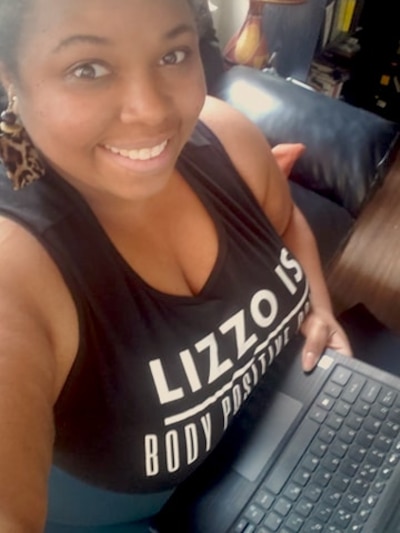
It’s common for LaTricea Adams to pop her head into a colleague’s office to ask a quick question about how Shelby County Schools oversees its 57 charter schools. Collaborating from the couch while working remotely just isn’t the same.
“Our office works very closely together., it’s very close knit,” said Adams, a manager in the district’s charter school office. Quick questions are now sent and answered via text, while brainstorming happens over video conferencing. “That’s probably the biggest change.”
The Memphis district originally closed schools but left administrative offices open, hoping to slow the spread of COVID-19. But Superintendent Joris Ray decided Sunday afternoon to let central office employees work remotely.
Though the transition itself went smoothly as employees picked up their laptops from the office Sunday evening to work at home starting Monday, the rest is “absolute ambiguity,” she said.
Where it was once easy for Adams to answer questions from charter school leaders, the disruption in everyone’s routine has bogged down her response time — she usually prides herself on being a “type A.”
“Literally things are changing — not even hour by hour — but minute by minute in some instances,” she said. On top of addressing complications from school closures, her office is still trying to stick to the state’s deadline for processing applications for new charter schools.
Plus, she’s always thinking about her parents who are over 60 and especially vulnerable to the new disease. She’s checking on them daily to make sure they aren’t leaving the house unnecessarily, and she has been picking up groceries for them. Other than that, she’s barely leaving the house.
“It must be the universe’s way of being like, ‘Girl, you need to sit down anyway,’” she said. “It’s just day 2. As of today, I feel OK.”


